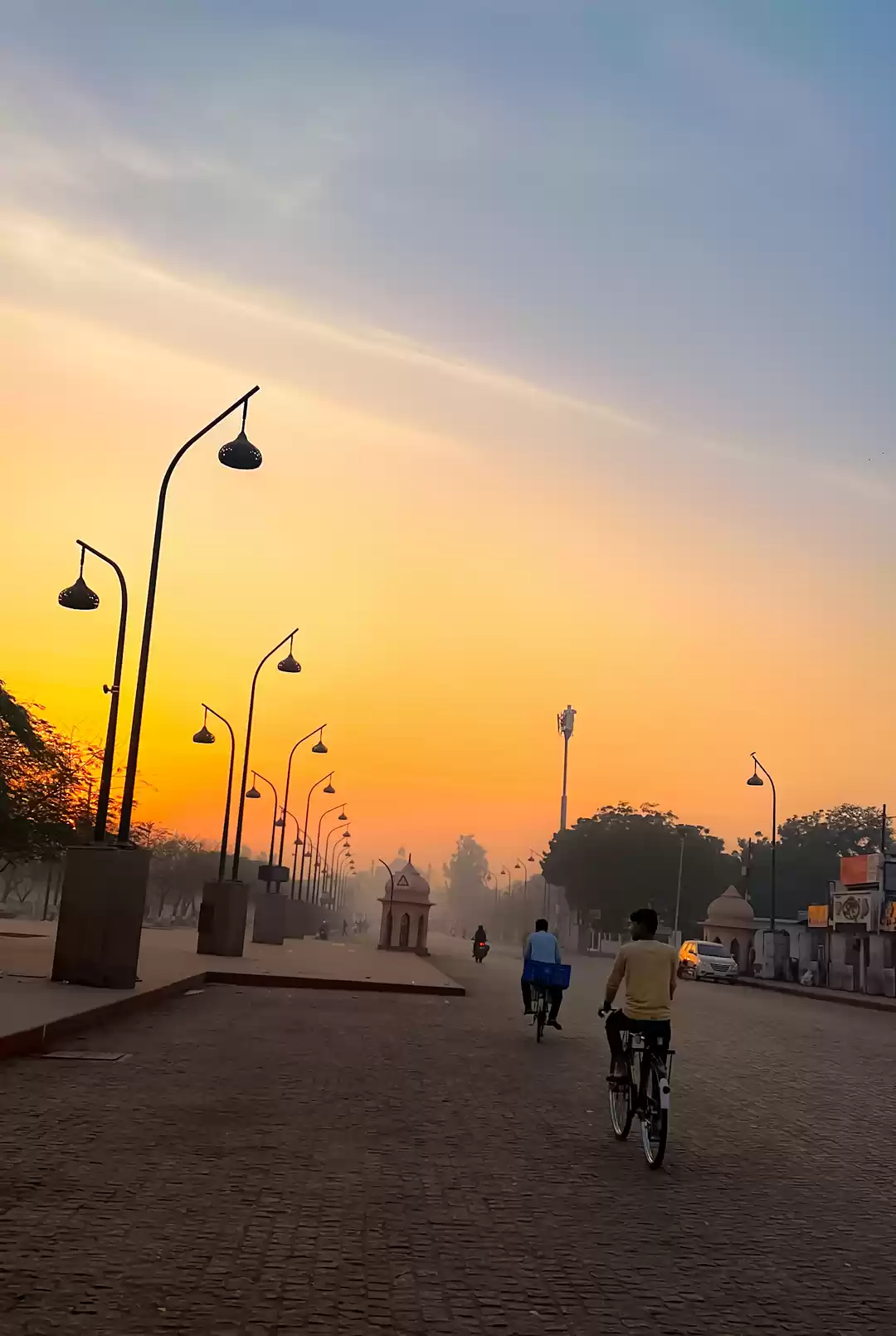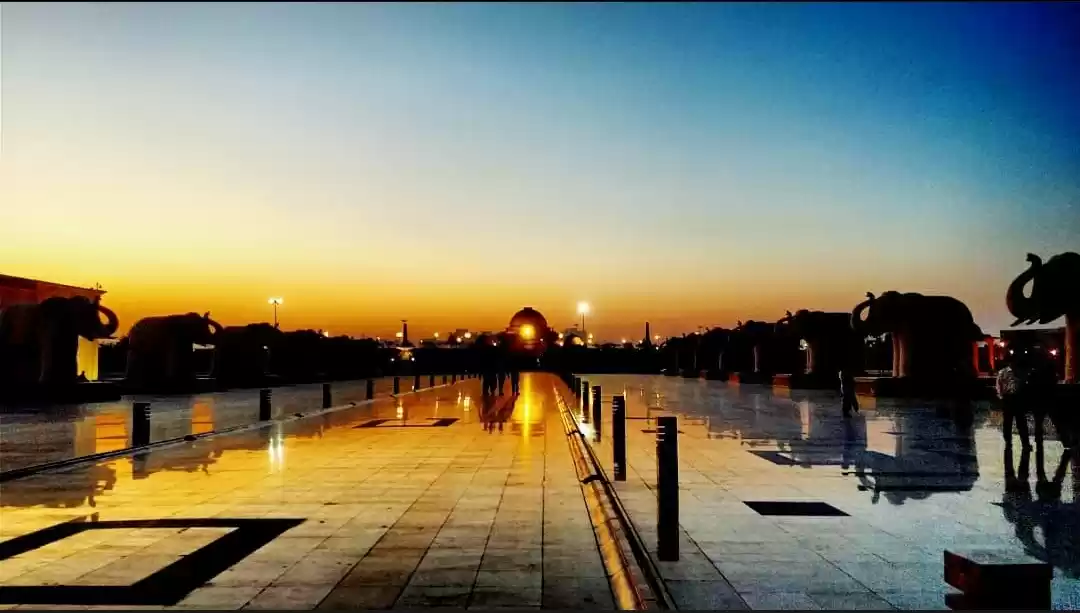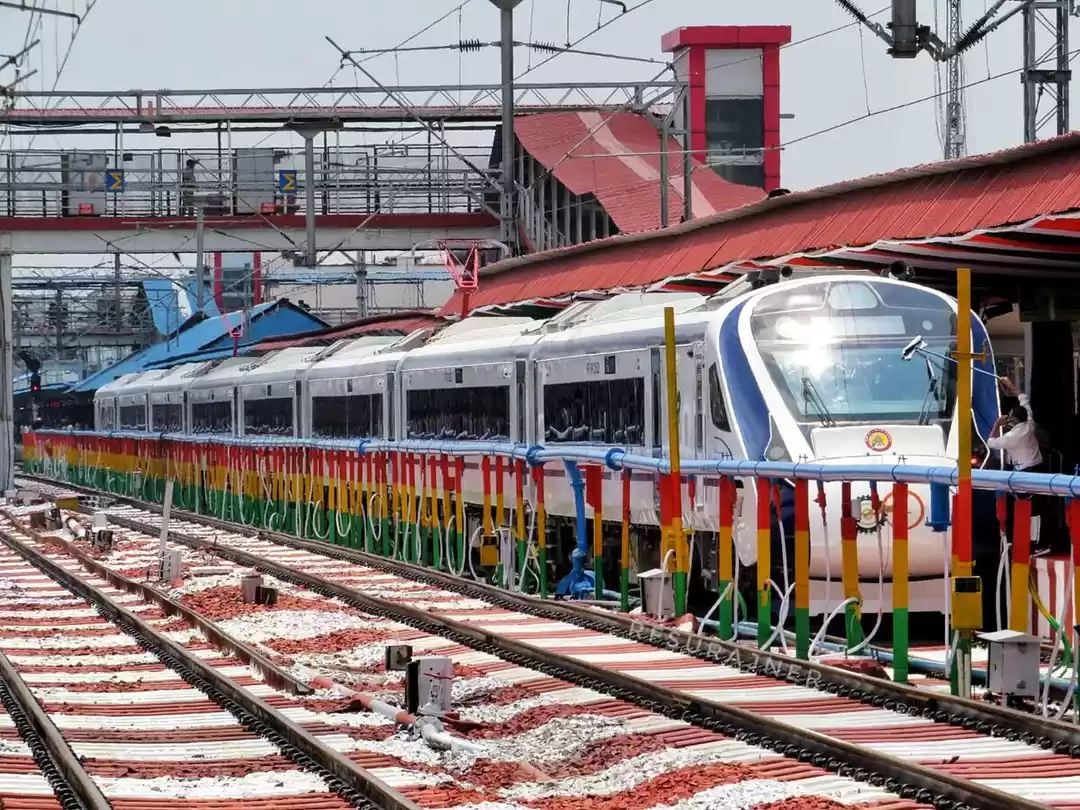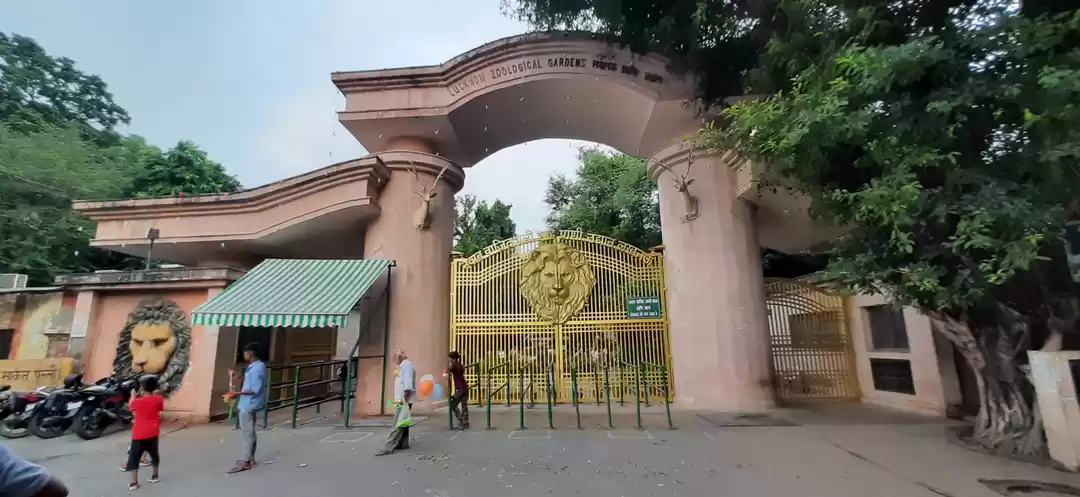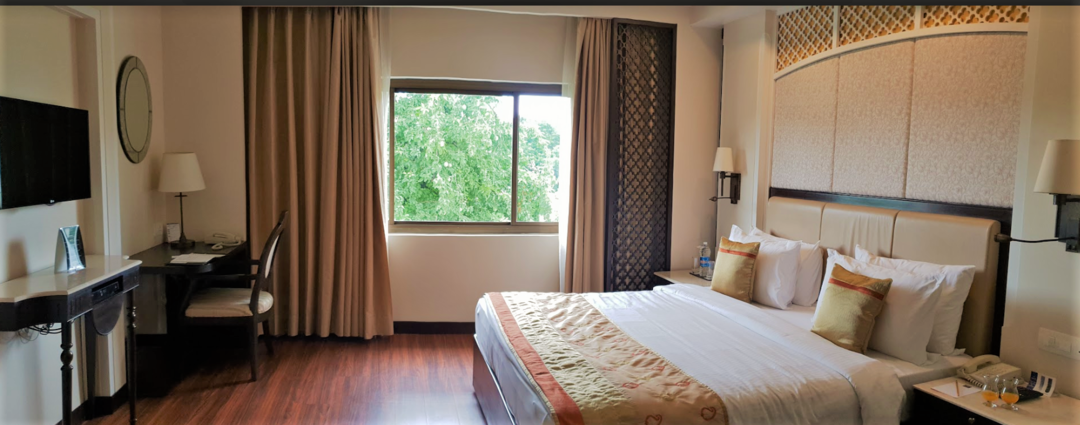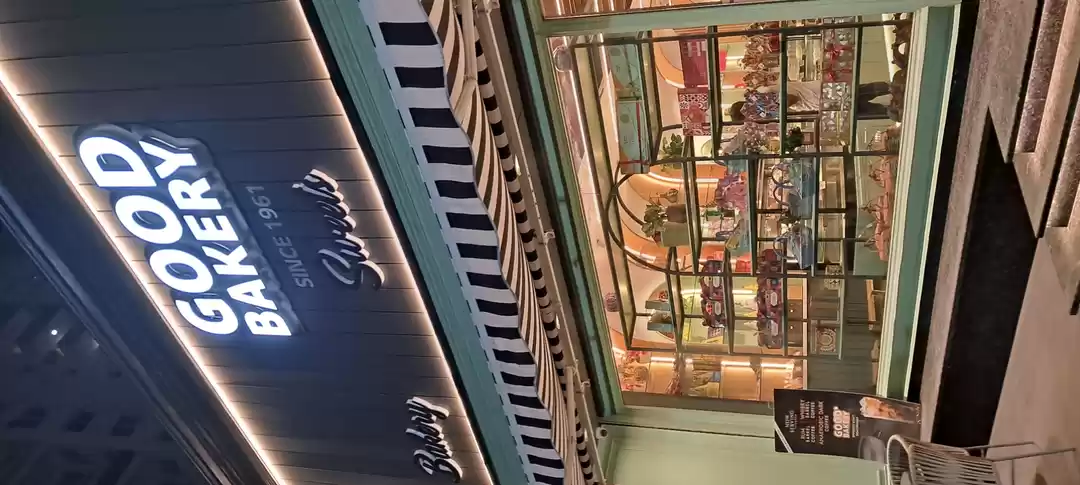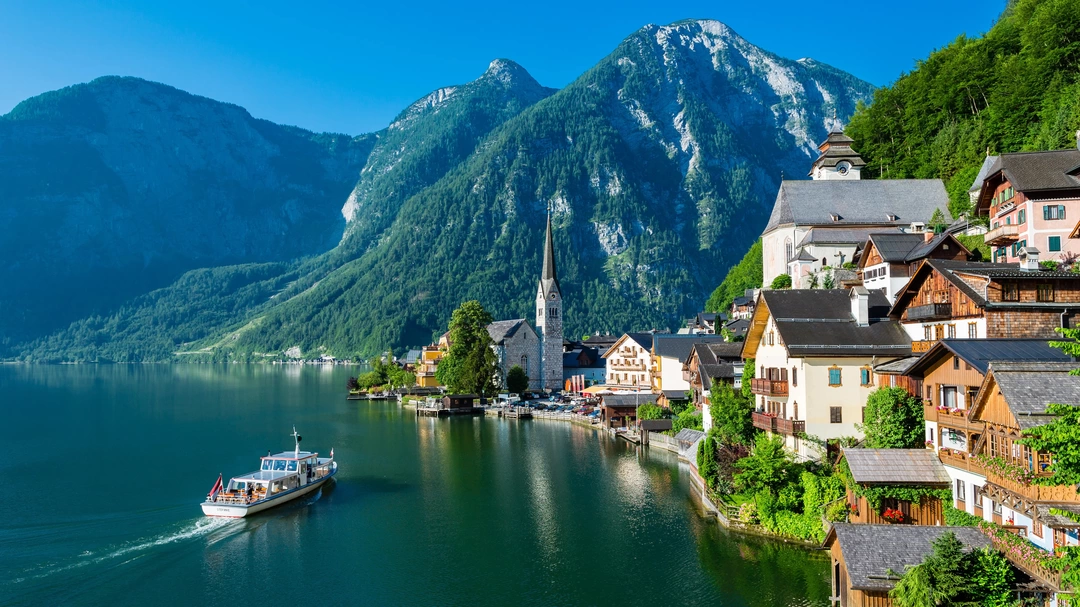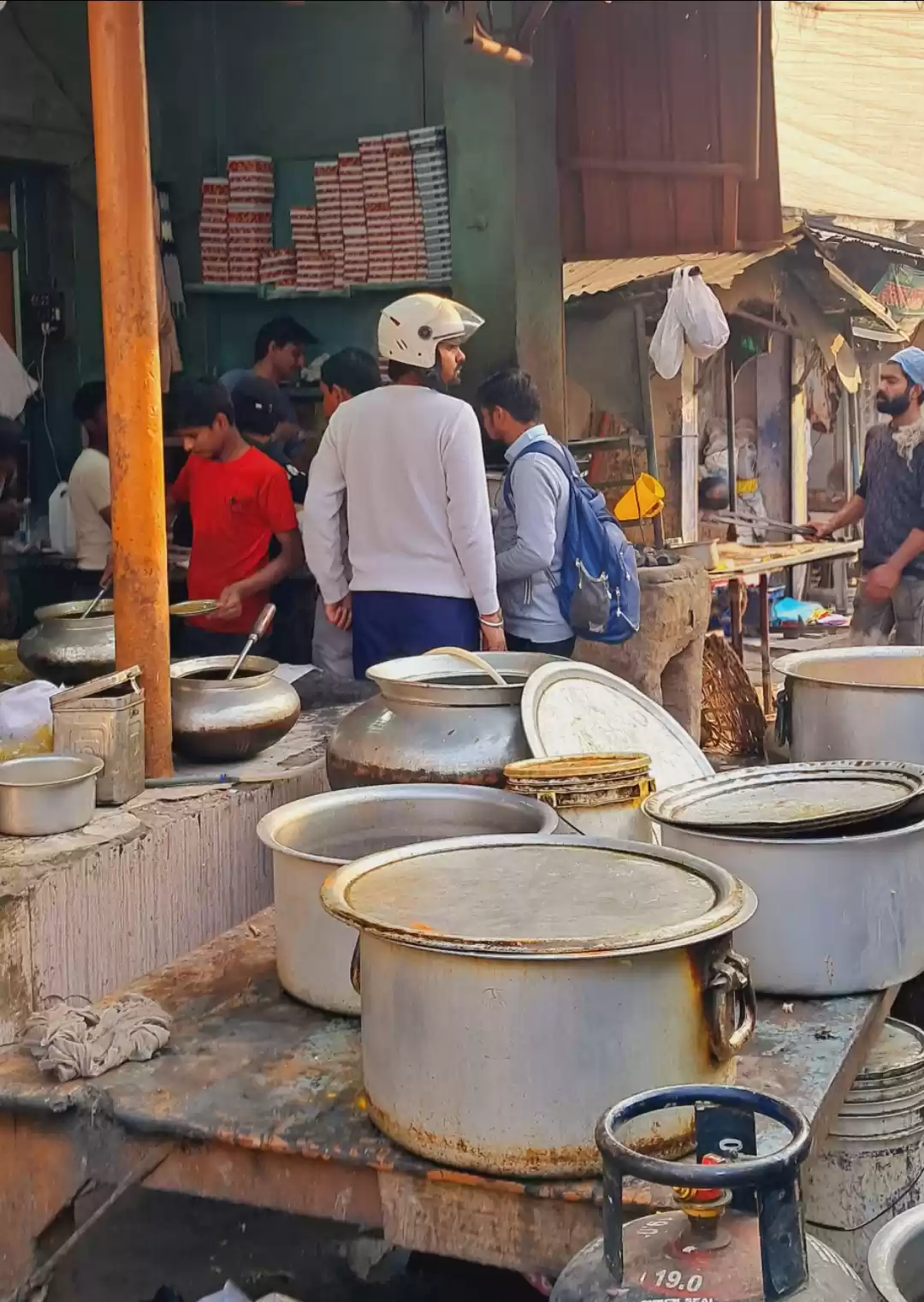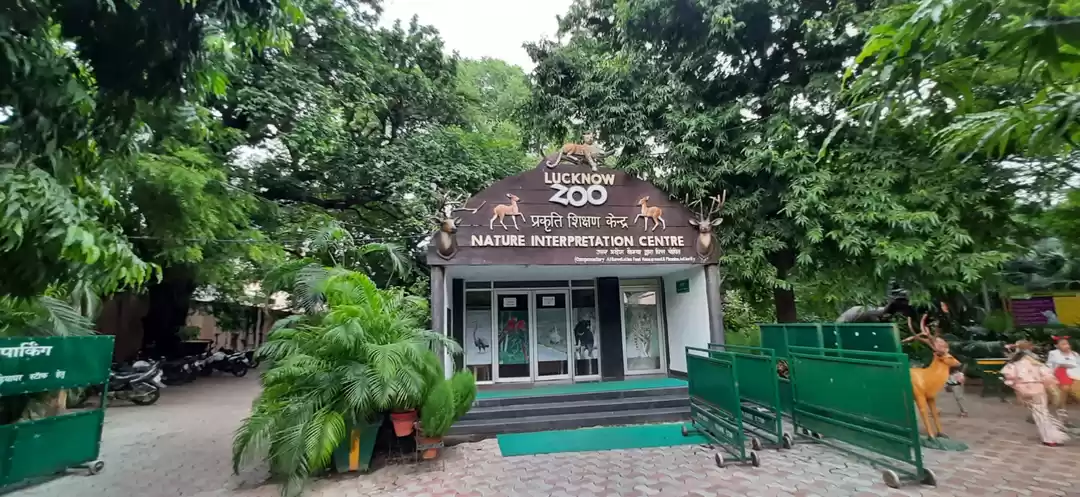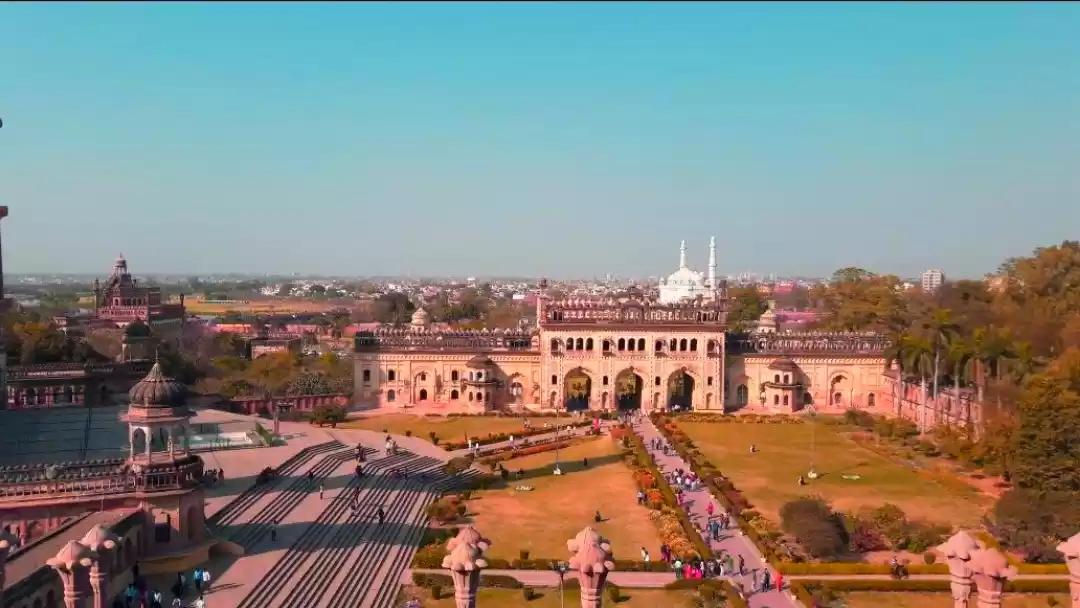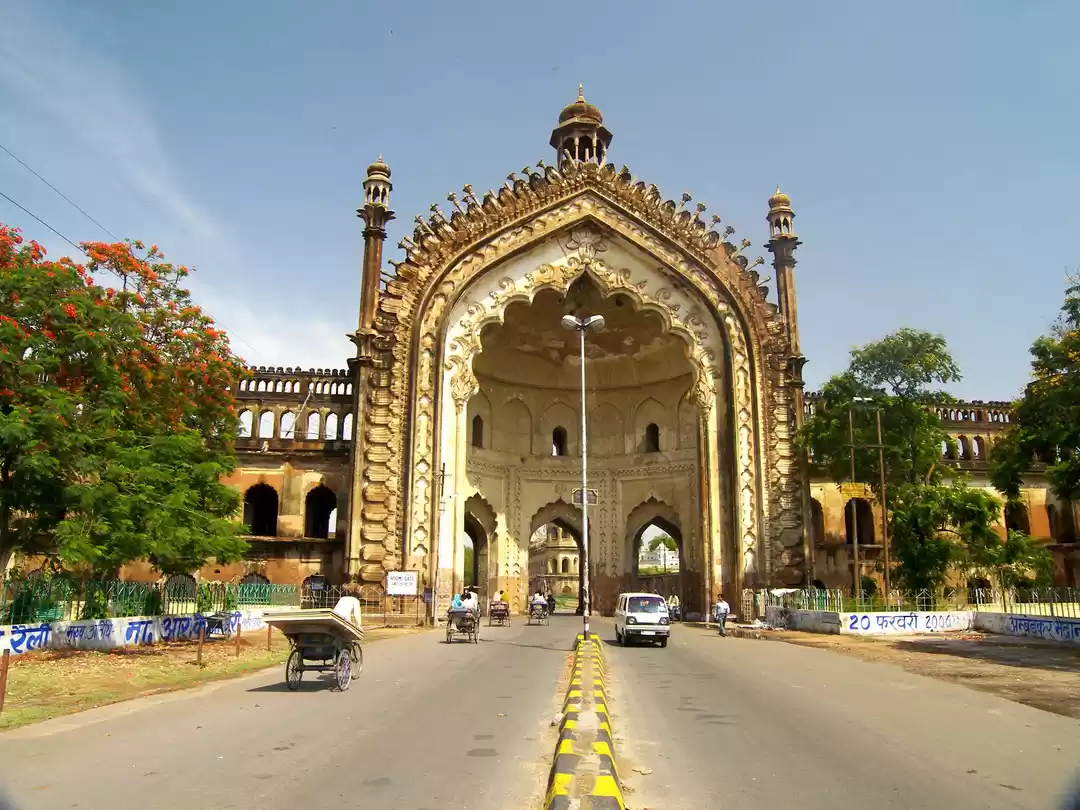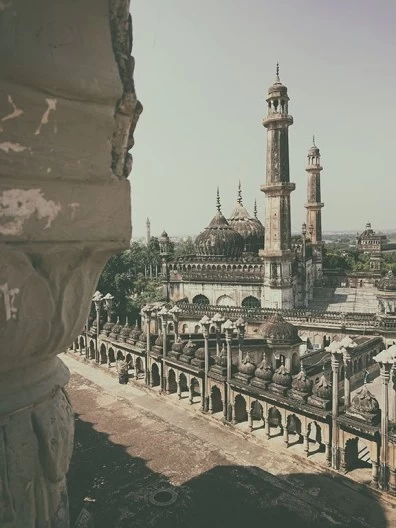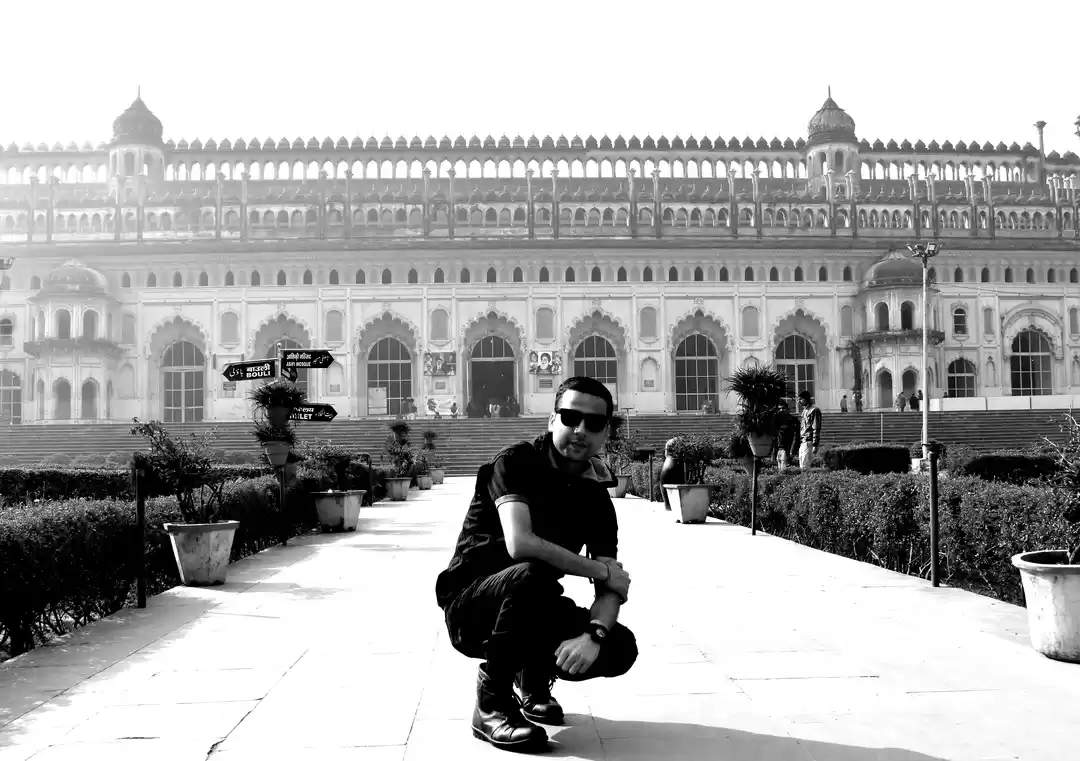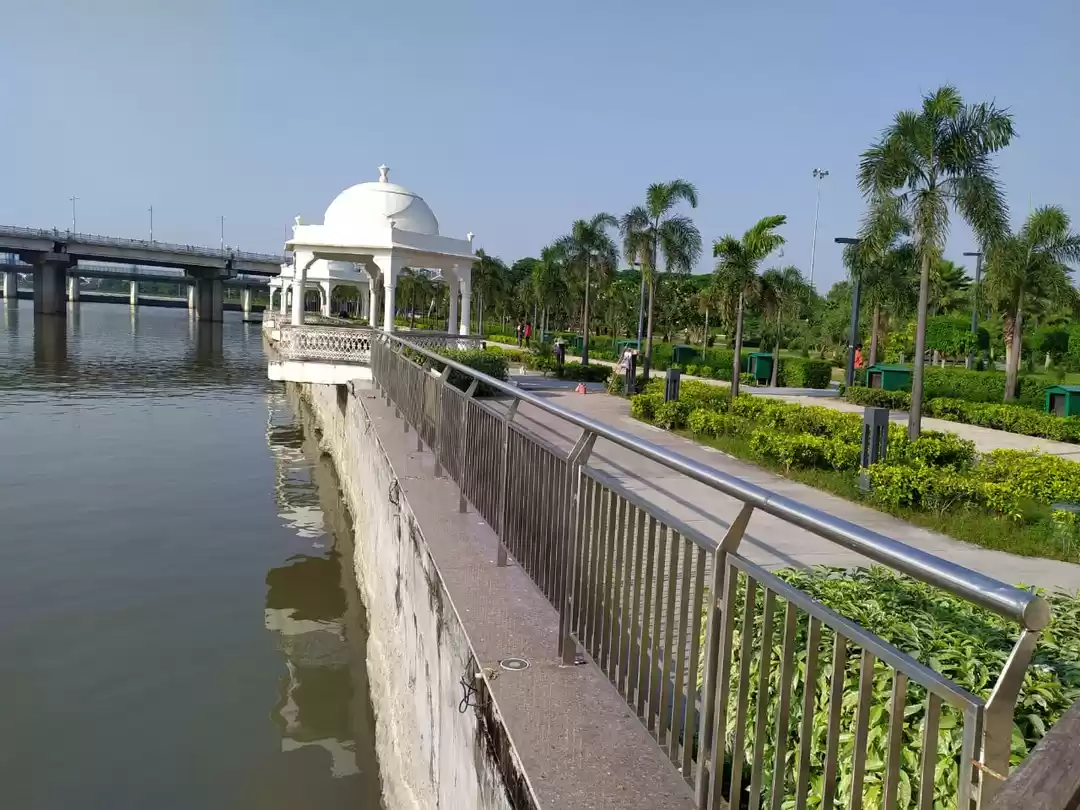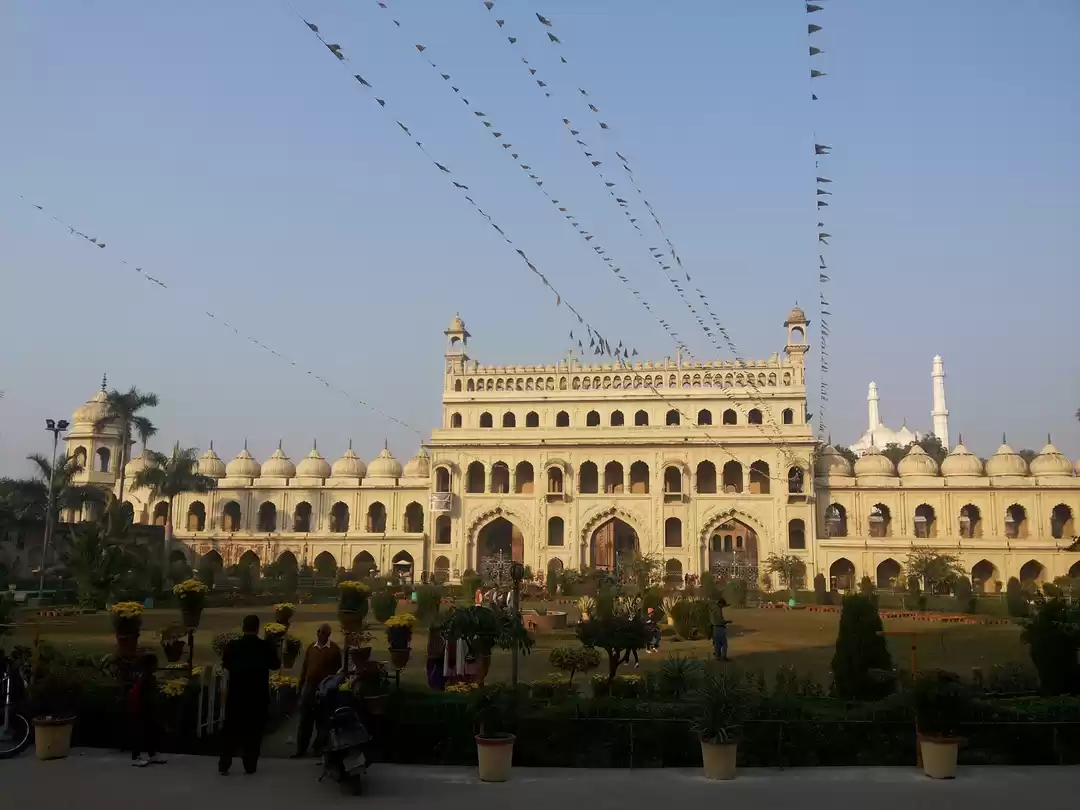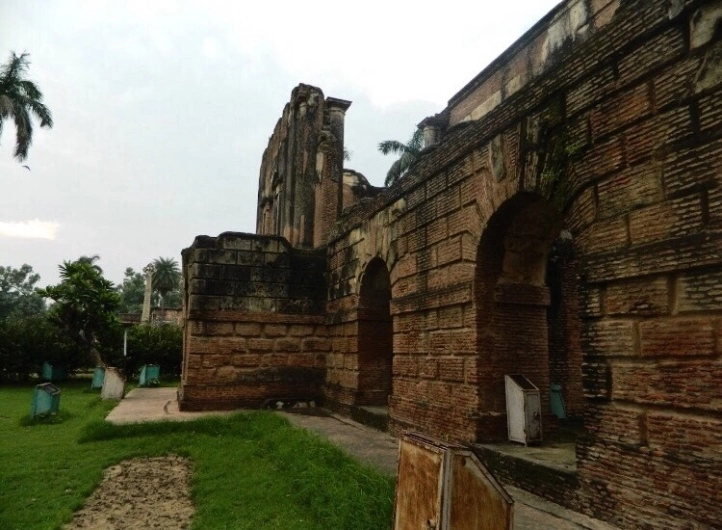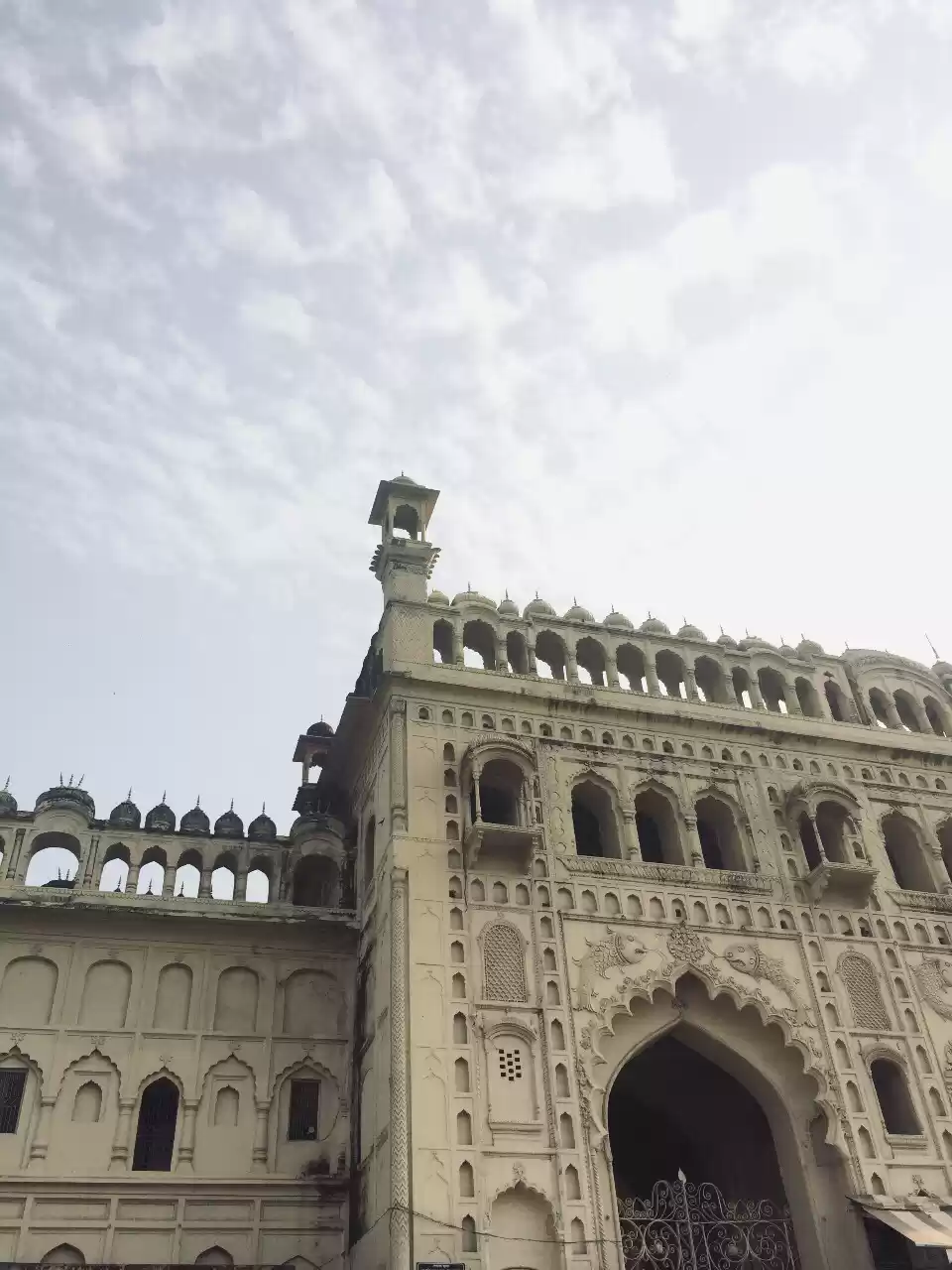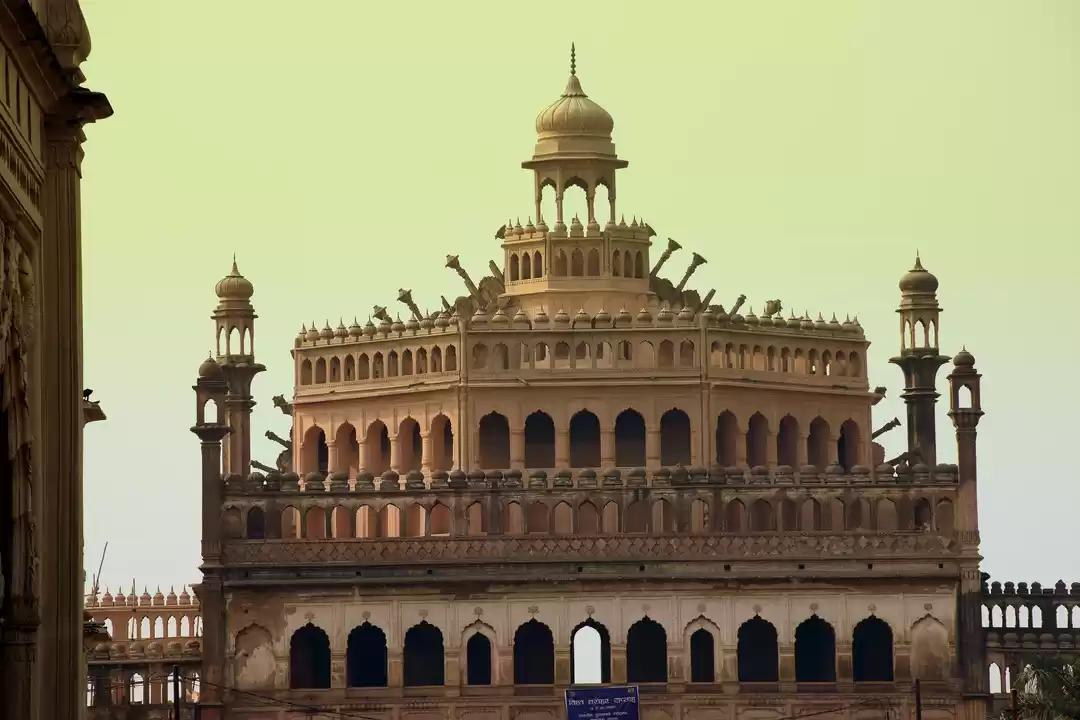
" Aasmaan ki kya taakat ke churaaye Lucknow,Lucknow hai humpe fida, Hum hai fida - e - Lucknow "

When you hear about various tales about the capital of Uttar Pradesh, you hear about the delicious melt-in-the-mouth kebabs, the mannerisms, the Nazakat and the hospitality of the City of Nawabs - Lucknow.
Lucknow has plenty to offer - from the historical sites depicting the ways and lives of the Nawabi rulers to the more urban side of the city with the Science Centre, the Saturn-shaped Planetarium and the plenty of different malls spread all over the city.
Everybody loves the city they're born or brought up in, so is the case with me too. I've spent my childhood and my teenaged years here in the streets and " Ganjs"& "Nagars" of Lucknow. When someone asks me about my story - the setting always is Lucknow. Lucknow shaped me into the person I am today. It told me - " this world is more about "Hum" (Us) and less about "Mai" (Me). "
But there's more to this large city than the manners, the food and the Nawabs. Let me take you on this interesting journey to explore the depths of Lucknow through its people, streets, locales, the infamous creative embroidery and the incredible architectures spread throughout the city. Let me showcase to you, a Lucknow - only the people who stay or visit here - can know about. Let me introduce you to Lucknow just as I know it to be - a place with amazing food and artistic architectures - and a place I call "Home".

While exploring through Lucknow, it will not take you long to realize that there are two different versions to the city - Old and New. Like most places around the world have.
The Older parts of Lucknow are basically the heart of the city. It pumps out and circulates the crux - the art and mannerisms of the city throughout the different parts in different directions. While walking through these congested - but energetic streets of the Old Lucknow, you will find people dressed in decent desi clothing, mostly in white kurta-pyjamas with those pointy Mojaris or plain old loafers.
The best thing about this part of Lucknow is that the local architecture has been kept preserved in its original form since centuries. The City of Nawabs Lucknow is a historic masterpiece - both in the legendary stories and the extraordinary Nawabi architecture. The story of this city is not just any travel story about the places you can visit or tick off from your lists, but about the various victories and losses, a story about sorrow, triumph and more than anything else - about Love.
First things first - History of Lucknow

Let's start from the very start. Lucknow's first ever name used to be Lakshmanpur, named after Lord Ram's younger brother Lakshman. It is believed that the foundation of this city was planned out by Lakshman.
The city came into everyone's notice first time not before the 18 th century. In 1775, the city became part of the grand Awadh (or Oudh) province setup by the Mughal Emperor Akbar. Nawab Asaf-ud-Dawlah came into being as the Nawab of Awadh who changed the capital of the region from Faizabad to Lucknow.
Everything went peacefully under the rule of Nawabs led by Asaf-ud-Dawlah. There is actually a quite popular saying about him that goes - " Jisko na de Maula, usko de Asaf-ud-Dawlah". Translation - " If the Almighty can't help you, Asaf-ud-Dawlah can and will ".

Asaf-ud-Dawlah was the one who loved paintings and various art forms and created the infamous architectural gems of Lucknow which make up the signature of the city- The Great Imambara, a Mosque and the Rumi Darwaza. He was the one under whose rule, the city flourished in various interesting aspects including the architectures, the poetries, the dance and the music and the overall lifestyle of Lucknow was now forming a legendary story where in the future people would call the city to be " The City of Nawabs ".
A few years later during the breakdown of the Indian Mutiny in 1857, the British commissioner along with a couple of European citizens living in the city were all surrounded and abducted by armed and angered forces seeking India's Independence. Due to which, the Britishers had to abandon the city for the year.
Although the very next year, they came back once the "First War of Independence" was done and dusted. They took control of the city again.

Sepoy Mutiny in Lucknow - 1857
Post-Independence from the British rule, Lucknow was made into the capital of Uttar Pradesh by the Government of India. The progress and development of the city has since, not stopped and keeps on growing and matching the technological advanced world we are all forming around us - while securing the crux for which the city stands for - it's culture.
Let the City open up to you
To really know the city and to explore the depths and meaning defined in its history is to visit the various interesting monuments spread around the "Heritage Walk" of the city of Nawabs. Tourists tend to visit these places first and foremost. And why wouldn't they? That is basically where the city introduces itself to you! How, though? You need to find that out by yourself.
The Pride of Lucknow - Rumi Darwaza or the Turkish Gate
Standing tall at a height of 60 feet, the Rumi Darwaza is the symbol of Lucknow. All the postcards, the websites, the pamphlets, the mails etc. depict this particular site as the first thing that your eyes catch when they come across Lucknow.

It is very interesting to know that most of these monuments of Lucknow like the Rumi Darwaza or the Bada Imambara were all part of a campaign led by Nawab Asaf-ud-Dawlah known as the "Food-for-work" Program. The FFW program basically was established by the ruler during the time when the city was hit by a major shortage of food and the people of the city were too self-respecting to ask for help from the National Treasury.
For the sake of saving the starving people, Asaf-ud-Dawlah created this campaign wherein he would hire people to construct huge monuments around the city in exchange of food being delivered to their houses.
It is also said that there was a strategy that helped the people to work longer till the famine gets under control. And the strategy was that whatever work the workers did during the day, was demolished into nothingness by the Nawabs during the night. This obviously did frustrate the workers but they realized it was done for their own good and for them to get more days to work-for-food.

Coming back to the Rumi Gate, this masterpiece of Nawabi architecture was different from any other Mughal constructed structures around the country - as for the other ravishing Mughal structures were all created by red stone and marble while the architecture of Lucknow was all made up with the help of bricks and lime.
This laid down the foundation of what now is said to be the artistic " Nawabi Architecture " infamous around the nation.
The Grandeur of Bara Imambara - A Pillar-less structure in City of Nawabs
The Bara Imambara is an outstanding structure of great cultural as well as artistic belief or value for the people of Lucknow. Made within the FFW program in the year 1784 by Nawab Asaf-ud-Dawlah.
The entirety of the area where the Grand Imambara stands consists of four major structures, namely - The Main Hall or Bara Imambara, the Labyrinth, The Grand Mosque (Asifi Mosque), and something called as a "Bouli".
The Main Hall of the Bara Imambara - Structure standing tall with no Support
The most interesting thing as well as something that makes the Bara Imambara in the City of Nawabs stand out - is the massive central hall which is actually said to be " the largest arched hall in the world". And more so interesting, is that it stands tall without any kind of support by any pillars made up of wood, iron or stone beams.
The main art showcased in the designs of the structure inside-out depicts an interesting and unique mix of styles of Rajputana and the Nawabi Architectures along with a Gothic theme.

One of the most exciting fact about the place is that the entrance part of the Main Hall is also referred as "China Hall", but why China? Well the legend goes that when the fourth Nawabi Ruler (you guessed it, right) Asaf-ud-Dawlah ruled over the city of Nawabs he had good relations with the Iranians as well as the Chinese.
Once while exploring through China, the Nawabi ruler brought with him the uniquely designed plates from China. The interesting thing and the reason behind naming the hall " China Hall" is that Asaf-ud-Dawlah was mesmerized by the designs on the various Chinese plates - so much so - that he ordered the workers to create the same designs on the ceilings of the Imambara! Fascinating, right?

As you move inside towards the main large hall of the Bara Imambara we come across what is also called as "the Irani Hall" - the ceiling of this hall is made up in a fashion depicting a large tray-of sorts with Iranian designs. ( Basically, looking at the ceilings of the structure - one might understand the fascination of the Nawab with Iranian and Chinese crockeries).
The grave of Nawab Asaf-ud-Dawlah has been kept right below the tray-like ceiling covered by a green box-of sorts to keep the body safe. It is famously said that the Ruler of the City of Nawabs asked his associates to bury his body inside the Bada Imambara so that " he shall be remembered at least till the structure stands tall ".

The Labyrinth or the Infamous Bhul Bhullaiya in the City of Nawabs
It's a magical paradise for architecture enthusiasts and many people still come here to figure out just "How?!" How can a structure that massive stand still without any beams or pillars?
Well, that was the incantation of the Nawabi Architecture which no one could ever figure out. It remains a fascinating question for many.
But we Lucknowites (that's something the urban citizens like to call themselves here) know the fact behind the magic. We know what causes the central hall of the Imambara to stand still since centuries. And the answer is - The Labyrinth.

Above the central main hall exists one of the most intriguing architectural features of the Bara Imambara, that feature is the Labyrinth (the Bhul Bhullaiya - in Hindi). A labyrinth is basically a maze-like structure with a complex network of passages where it feels quite impossible to find a way out.
The Labyrinth or the Bhul Bhullaiya is crafted in such a way above the chambers of the Imambara with thousands of different passages or ways that it keeps the entire weight falling on the main hall - to a minimum.
Note - If you are exploring the Labyrinth of the Imambara for the first time, do not forget to take a guide with you. It can be quite frustrating loosing your way out and being lost in small passageways filled with bats and spiders!

Another Interesting tale which many Lucknowites believe in is that - The place is Haunted! There is actually a legend that we were all told in school and I'll share it with y'all.
So the story went that during the British Rule, there was an underground dungeon or Tehkhana below the main hall of the Imambara where the citizens were locked away for many years - and they died of starving in the darkness. The legend says that when roaming around the labyrinth of the Bara Imambara many people felt a "sort of presence" around them. Some claim they heard voices (mainly whispers) coming from inside the many passageways in the maze. We were told that during the "Full Moon Night" there happens to be two ghosts who climb to the topmost layer of the Imambara and - dance! That's what they do - they dance through the night - on the sounds of air and car horns (maybe?)
The Grand Asifi Mosque - Depicting an era gone by
Known to be one among the various grand structures of Nawabi origin in Lucknow, the Grand Asifi Mosque stands out in depicting the art and culture the people in that era believed in and followed. Created under the rule of Nawab Asaf-ud-Dawlah and designed by the infamous architect of the time - Kifayat Ullah, the Grand Mosque stands tall as an imarat of Godly-nature. A stretch of twenty-eight stairs are spread out for you to climb on towards the "Home of God" to pray and believe in the One, in yourself and the Universe.

You can find eleven arched doorways on the front of the Mosque with the one in the middle comparably bigger in size, and two huge minarets standing tall at both the corners.
An interesting tale of the Grand Mosque in the City of Nawabs is that post the Sepoy Mutiny, the Britishers took control over the large parts of the city which included the Mosque. They even once tried to collapse the giant structure. The plan was to build a water channel just towards the west wall of the structure and once it's done - to slowly drain the water inside the foundation to collapse it - from the inside!
The plan was executed but the structure was a Nawabi one - it stood still while the waters were sent in. The plan, thus, went in vain.
The Shahi Bouli in the City of Nawabs
Another gem of a site located inside the premises of the Bara Imambara, is what is known as the Shahi Bouli. According to the historical legends, this place holds the key to the Nawabi treasure of King Asaf-ud-Dawlah.
As for the FFW program mentioned earlier, the Shahi Bouli was the first structure to be built. It's unique architecture was created in such a way that the water which was present in the huge well, would directly be connected to the River Gomti. You can see the size of the well as you move around it to explore the sight.

The Bouli was actually playing a significant role in developing the other huge structures like the Imambara and the Asifi Mosque by providing the required amount of water to be used.
The most interesting feature that people from all over come here to explore this particular area - is the Nawabi Treasure. We have all played around over our backyards searching for a hidden treasure after watching a couple of cartoon shows or movies, right?
There is actually a really fascinating thing about the Treasure of the Nawabs. So when Britishers approached the city of Nawabs to conquer it, the kingdom possessed insane amounts of treasure - golds, silvers and so many other precious and glowing ornaments.

To keep the treasure away from the Britishers' grab, the Nawabs hid the treasure somewhere inside the area surrounding the Bada Imambara. And it remained hidden ever since. Now, the interesting thing is that - no one knows where it's hidden! Maybe it's engraved inside the thick walls of the Imambara, maybe it's somewhere in the Shahi Bouli.
It is said that the map leading to the treasure was dropped inside the well of the Bouli and the treasure keeper called Mool Chand Rastogi committed suicide as Britishers approached him. The Britishers kept searching for the treasure inside the structure of the Imambara, but failed and some were even lost for a while inside the Bhul Bhullaiya - thus they named it as " The Labyrinth ".
The Residency - Reminiscing the Siege of Lucknow
Lucknow or the City of Nawabs actually played a very vital role during the Revolt of 1857 in India. During that time, the Residency, situated at the Qaiserbagh area of Lucknow, was the living quarters of the British Generals. Roaming through the ruins and the museum inside the area, you can find and relive the history of the place and the city - and even reminisce into the time when the Britishers ruled all over India.
The Residency can be easily said to be a place in Lucknow which has felt it all - from the grand vibe and lifestyle of the British Generals to the burning minds of the Indian warriors during the Siege and the struggle for freedom during 1857. As you roam around the place and go deep within its heart remembering what all used to be, you will feel an unknown amount of complex feelings - the grandness broken down into crooked structures, the bullet marks lurking on the walls - and some things which cannot be described.

Office - The Residency - Lucknow - India
Post the Battle of Buxar, the Nawab of Lucknow and Bengal joined hands and formed an alliance to build an interesting " city within a city" in Lucknow in 1764. The Britishers appointed a General Resident to guard the complex so they could set up a strong hold over the richest province of Awadh. The complex was then named as the British Residency.
Many British Generals slowly made their way and arrived to live inside the well-built Residency and had their meetings and all inside.
The structure consisted of a huge living complex complete with a school, a banquet hall, a post office, places of worship, a cemetery, stable for horses, house of sheep, a garden and even a pool.
During it's development it was not that big structure, but due to Major General Claud Martin, it became a complete township for the Europeans to live in.

Then came the major act for which the Residency was going to be known and remembered for in the coming years, centuries, even - The Siege of Lucknow.
As the momentum of Revolt of 1857 rose up from towns to larger cities, it did not take much time to arrive in Awadh province. Indian Soldiers, previously working in the British Army, gathered in thousands and surrounded the Residency where all the Europeans in Awadh lived. The huge Guarding Gate kept the soldiers away for merely 6 months. And then the burning rage and the spirit of the Indians went so strong that nothing could stop them anymore.
Bullets were fired, cannons were ejected - and the Britishers had to finally abandon the complex. The complex we see today, is what was left after the revolt ended and the Britishers left the province.
Also Read: ambedkar memorial park lucknow
That's all for the part l of the Lucknow through My Pen Series people. Lucknow is etched within my heart - and it's story cannot be completed in just one blog post. Be ready for the other parts and to feel the vibe of Lucknow - beyond anything you've ever imagined. Beyond the impossible.
See you folks!!
https://travelsole.in/2021/05/lucknow-the-city-of-nawab-1.html


